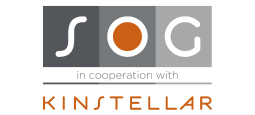Lately, investors have had fairly high expectations for the Serbian real estate market. New and improved real estate and construction regulations, updates to the urban plans, and the announcement of significant projects all indicate that a very interesting period is in front of us.
Serbia moved up 116 spots in the World Bank’s global Doing Business 2017 ranking, according to the recent data regarding dealing with construction permits, coming in 36th out of 190 ranked countries.
Recent changes to Serbia’s Planning and Construction Act made dealing with building permits faster. The so-called “integrated procedure” for obtaining all necessary documentation for construction, electronically, on a “one stop shop” basis was created. This procedure encompasses all actions in the construction process, from determination of adequate location conditions, through the issuance of the building and use permits, up to the registration of ownership of a newly constructed facility in the Real Estate Cadaster.
The total number of building permits issued from January to November 2016 represented a 21.5% increase over the same period in 2015.
Nevertheless, Serbia is still dealing with the post-socialist right-of-use regime on state-owned land designated for construction. Although conversion proceedings (i.e., converting the right of use on the construction land into ownership, for a fee) are finally being implemented, this process has turned out to be unexpectedly slow, and it seems that a new effort of the Ministry of Construction is required to accelerate it, mainly because the right of use on land no longer serves as a basis for obtaining construction permits. Given that now only ownership on the land (in addition to a long-term lease) serves as a basis for obtaining a building permit, the speed and overall efficiency of the conversion process is therefore crucial.
However, there have been other changes in Serbian legislation that should boost the Serbian real estate market. For example, the registration of real property rights has been improved recently by fresh amendments to the Real Estate Cadaster and Survey Act. The Mortgage Act also underwent significant changes recently, removing many obstacles to its implementation.
From the market perspective, the traditional focus has mainly been on residential and business developments. However, there has also been a growing trend towards the construction of retail parks and shopping malls. This is partly due to the fact that this kind of facility has not been widespread in Serbia in the past and also because it is a growing trend all over Europe.
The market share of major hypermarkets and retail chains in Serbia has been constantly growing during recent years. Additionally, international hotel chains may play an important role in the coming period, given that the market still lacks a significant presence of high-end hotels and hotel chains.
Currently, the biggest construction project in Serbia is the Belgrade Waterfront project: A EUR 3.5 billion residential and business complex in Belgrade. The project is being conducted by the Republic of Serbia and an investor from the United Arab Emirates.
One third of all construction projects in Serbia are located in Belgrade at the moment; consequently, the city represents a driving force behind the country’s construction industry. There are several projects planned with regards to renovation of the capital, including the restoration of the city’s main symbol, the Belgrade fortress, construction of a new principal bus station and new public garages, the renewal of facades, the extension of bicycle areas throughout the entire city (making bicycles a new form of urban public transport), and other developments of major public areas. With regards to public infrastructure projects, there is an increasing tendency by both state and local authorities to undertake such projects through a public private partnership.
When it comes to residential premises in Belgrade, the asking prices of high-quality projects start from EUR 2,200 per square meter, while mid-range projects usually range between EUR 1,500-2,100 per square meter. The average rent for class A office premises in Belgrade ranges from EUR 15-17 per square meter, and for class B office premises from EUR 11-12 per square meter.
By Ivan Gazdic, Head of Real Estate, and Mario Kijanovic, Associate, Bojovic & Partners
This Article was originally published in Issue 4.3 of the CEE Legal Matters Magazine. If you would like to receive a hard copy of the magazine, you can subscribe here.



